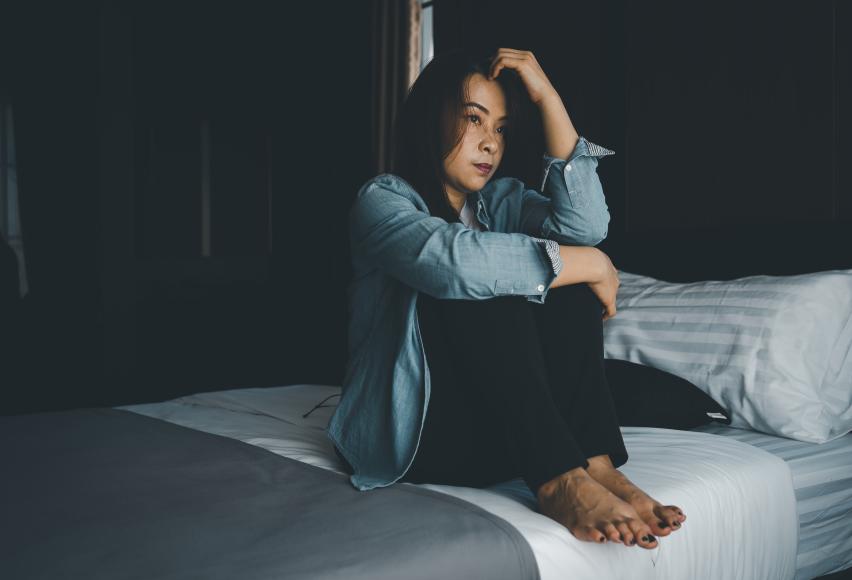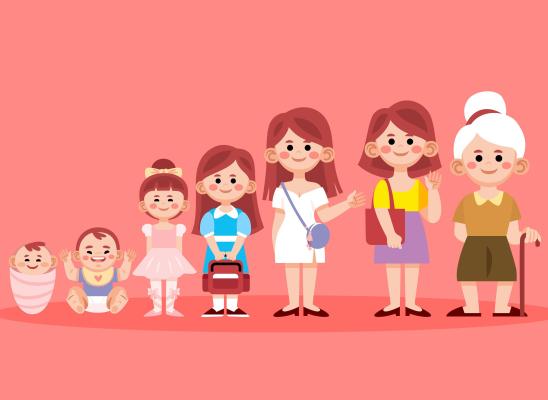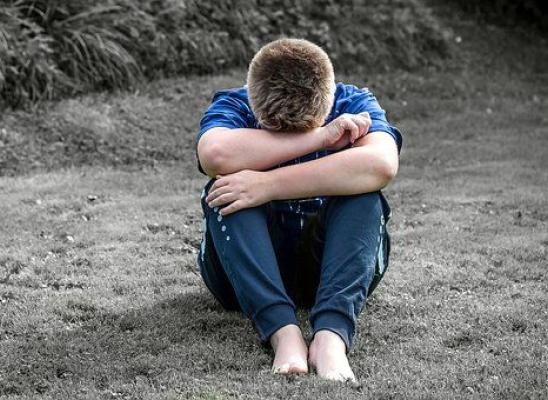Living with Trichotillomania – The Real Deal

Online test
Find out the severity of your symptoms with this free online test
Trichotillomania, also known as hair-pulling (HPD), is a condition that involves pulling at, “messing with,” yanking out, and/or over-plucking (i.e. eyebrows, genital hair, and hair on your arms and legs, and under your armpits) your hair. This behavior not only affects your appearance, but also your self-esteem, sense of self, mood, and quality of life.
Approximately 2% of people worldwide struggle with HPD daily. And, according to a 2016 study, more females are afflicted with HPD than males. Researchers have also found that HPD may come and go throughout your life – stabilizing or going away only to return in the future. The most commonly “pulled” or “picked sites” are your eyebrows, scalp, body hair, and eyelashes.
The truth is when you have HPD, the urge to ease your stress by pulling and “picking” hairs that feel "foreign" on your body is often greater than your willpower. The result? An assortment of new and old wounds, blemishes, marks, scabs, and bald spots all over your body.
The mere thought of pulling at one’s hair may sound "odd" to the average person, however, for people with HPD, it is not only very real but a daily occurrence. When you have HPD, you can't "just quit," as one would assume. This urge is insatiable, unrelenting, and impossible to ignore. It builds and builds until you give in and engage in the compulsion (hair-pulling or picking) – for some much-needed relief.
Gratification, joy, and even happiness accompany performing the specific action (hair-pulling and picking). To add to the confusion and tension, most people with HPD aren’t quite sure why they feel the need to pull or pick at their hair for relief. This causes many people with HPD to experience identity crises. These individuals report feeling “lost” or “confused” as to why they engage in compulsions or ritualistic behaviors.
Some people with HPD feel like they are floating out of their bodies, while pulling, picking, tugging, and/or yanking out pieces of their hair. It’s almost as if someone else is performing the behavior – not them. These individuals can’t tell others why they pull at their hair, because, frankly, they don’t know.
In fact, studies suggest that people with HPD tend to do the actual hair-pulling or picking “semi-consciously,” while performing tasks like cooking, watching television, daydreaming, eating dinner, talking on the phone, browsing the internet, or even resting. These individuals describe being in a “trance-like state” because they are there physically, but not fully there mentally.
Keep in mind, however, that research in this area is limited, partly because HPD is a “hidden” condition. In other words, most people with HPD hide their scalp wounds and hair loss from others – even friends, family, and their doctors.
And, even though pulling hairs may seem “meaningless” to some – it’s not. Yes, most of the time the hair grows back, however, continuous hair-pulling and picking can lead to chronic infections and/or irreversible hair follicle damage, resulting in permanent hair loss. But, HPD can also wreak havoc on your self-esteem.
So, the damage isn't just physical – it's also emotional and psychological. HPD affects all areas of your life, causing you to retreat from the world when possible. It's a lonely condition. You feel like you can't trust anyone with your innermost feelings, beliefs, or behavior. And, to top it off, covering-up the wounds, shortened hair, and bald spots takes a lot of effort.
The "cover-up" consumes a lot of your time. But, you are deathly afraid that someone will discover your "secret" and change his or her view of you because of it. This is an ever-present fear for people with HPD – one that can worsen the hair-pulling and picking behaviors. As a result, these individuals are constantly looking for ways to keep this "secret" under wraps.
Understand that you are not alone. Help is available, but you must gather your courage and reach out to a mental health professional or someone you trust to receive that help. There is no shame in having HPD. It doesn't define who you are or what you'll be in the future. But, the only way you'll achieve your goals and improve your quality of life is to seek help. A professional can teach you skills and provide you with tools that can help you live a happy and healthy life.
Is HPD the Same for Everyone?
No, it is not.
Just as in life no two people are the same. This also applies to HPD and its treatment. In other words, there is not a “one size fits all” symptomology or treatment that fits every person with HPD. Rather, symptoms and the treatment vary from person-to-person. And, contrary to popular belief, there also aren’t “miracle grow” pills, cream, or masks that can make your hair grow back in record-speed time.
The truth is it takes time for your hair follicles to heal and your hair cells to regenerate. Thus, it is impossible to place every person with HPD in the same box. It’s equally impossible to apply the same treatment approach to everyone with HPD.
People with HPD experience the condition in different ways. For instance, some people feel comfortable wearing wigs and getting hair extensions to cover up the hair-pulling, while others may not have the money for hair extensions or shun wigs because they scratch their scalps. Thus, each person with HPD is an individual.
Real-Life Cases of Trichotillomania
Listed below are real-life examples of what it is like to live with HPD daily:
Raphaela
Raphaela, 19, student, began struggling with HPD after she turned 16-years-old. In the beginning, she would simply play with her hair and gently tug at the strands. Because the symptoms were subtle, she didn’t give her behavior much thought. But, as time went on, the hair-pulling continued and worsened.
After a while, she started to continuously pull her hair out, causing noticeable thinning and bald spots. Raphaela would “zone out” while pulling at her hair, so she wasn’t aware of what she was doing until she would look down and see pieces of hair lying beside her on the couch or bed.
It was hard for her to tell loved ones and friends what was happening, but it was necessary. Raphaela was afraid that the people she holds dear would shun her, look at her differently, or think she was "weird." She was ashamed and embarrassed about having such an "odd" condition, but she simply couldn't stop on her own.
Most of her friends and loved ones didn’t even know what the condition was when she told them about it. She had to explain it to them and most were still confused. But, regardless of if they truly understood the condition or Raphaela’s experiences, they accepted Raphaela. And, it was their support that helped her muster the courage to seek treatment.
Samantha
Samantha, 25, content creator, started pulling her hair out when she was around 12-years-old. However, at the time, she didn't realize it was happening, because she did it “absentmindedly,” while lying in bed at night and/or while thinking about other things. In the beginning, it was a “mindless” activity, but by the time she entered middle school – things changed.
She started wearing makeup and became fascinated with mascara. That is when things took a turn for the worse. Because Samantha didn’t know how to properly remove her makeup, she would pick-off her mascara with her fingers – pulling off her eyelashes along with it. Over time, this practice became “learned” or “ingrained” until it became a “habit.” The eyelash-picking followed Samantha into adulthood.
First, she would get an “itch” or an urge to pull at her eyelashes – this “itch” would escalate if she didn’t engage in the compulsion (pulling out her eyelashes). This “itch” was uncomfortable so she desperately wanted to stop it. She would become “fixated” on one or two hairs and they would bug her until she removed them. Then, she’d feel better – relieved.
The problem was Samantha wasn’t just removing one or two hairs. In fact, by the time she was finished pulling out her eyelashes, it would be a pile of them on the floor, bed, or couch, etc. Sometimes, she’d barely have eyelashes left after “mindlessly” pulling at them. Her friends and loved ones noticed her “bald eyes” and asked her what was wrong, but she refused to tell them the truth – at first.
When she finally told them what was going on – they were there for her. It took a while for her to seek treatment, but their love eventually prompted her to talk to a professional about what she was feeling and doing. Now, she is on the path of recovery. It’s not easy and she works on not feeling ashamed every day, but she is healing.
Self-Help Tips for HPD
Learning how to change how you see HPD can be the tipping point on your path to recovery. Although, professional help is usually needed to help you manage the condition, listed below are helpful tips that can supplement your treatment plan or help you begin the process of healing, while you wait to see a mental health specialist.
1. Share your truth
In other words, talk to someone about your feelings and experiences. Hiding your bald spots, scalp wounds, and hair loss from others is unproductive. Other people may not detect the wounds and hair loss at first, but eventually, they will notice that something is wrong.
Plus, the satisfaction that comes with pulling or pick at your hair is only temporary, which is why you need the support of loved ones, friends, and a mental health specialist. But, they can’t help you, if you keep your thoughts, beliefs, and behaviors a “secret.” You’re not alone, so pick someone you trust and share your truth.
2. Track it
You can purchase HPD awareness electronic bracelets online that will send you an alert every time you raise your hand to pull or pick at your hair. The goal of this device is to help you become more aware of what you’re doing, so you can make a conscious effort to stop.
3. Keep your hands busy
A good way to prevent or stop yourself from pulling or picking at your hair is to keep your hands busy. Try to keep something in your hands at all times – or at least during your “free time” (i.e. while watching television, lying in the bed, reading, while at work, when you’re bored or restless, and while eating, talking on the phone, or surfing the internet).
What should you use? A good choice would be a squishy ball, a rubber band, a fidget spinner, a string, pipe cleaner, or piece of floss, a pencil or pen, a pot scrubber, “worry beads,” a blanket, playdough or silly putty, a cross or religious emblem, a stuffed animal, a lucky charm, necklace chain, etc.
In Summary
You don’t have to suffer in silence anymore. While living with HPD is not a walk in the park, there is help available. But, you have to reach out to someone first. And, although, you may feel like you are alone – you’re not. You are loved and your loved ones and friends want to help you.
Just because you have HPD doesn't mean that there isn't something out there that is better for you – i.e. a higher self-esteem, a better life, and happiness – real happiness not the kind that only lasts until the next round of urges arise.
So stop blaming yourself. And, stop secluding yourself from the people who love you. You deserve better than that. You deserve to have the life you’ve always envisioned. And, guess what? It is possible to achieve this with the right help. So, take that first step and share your truth with someone you trust.
References
1. Hussein, J. (2020). 6 People on the reality of living with trichotillomania. Allure Magazine. Retrieved from https://www.allure.com/story/living-with-trichotillomania
2. Grant, J. E., & Chamberlain, S. R. (2016). Trichotillomania. The American Journal of Psychiatry. Retrieved from https://doi.org/10.1176/appi.ajp.2016.15111432
3. Paton, E. (2020). Pulling out your hair? This might be the cause. The New York Times. Retrieved from https://www.nytimes.com/2020/05/21/fashion/trichotillomania-anxiety-treatment.html
4. Himle, J. A., Perlman, D. M., & Lokers, L. M. (2008). Prototype awareness enhancing and monitoring device for trichotillomania. Behav Res Therapy, 46(10),1187-91.Retrieved from https://pubmed.ncbi.nlm.nih.gov/18723160/
Online test
Find out the severity of your symptoms with this free online test
Start your journey with TrichStop
Take control of your life and find freedom from hair pulling through professional therapy and evidence-based behavioral techniques.
Start Now



